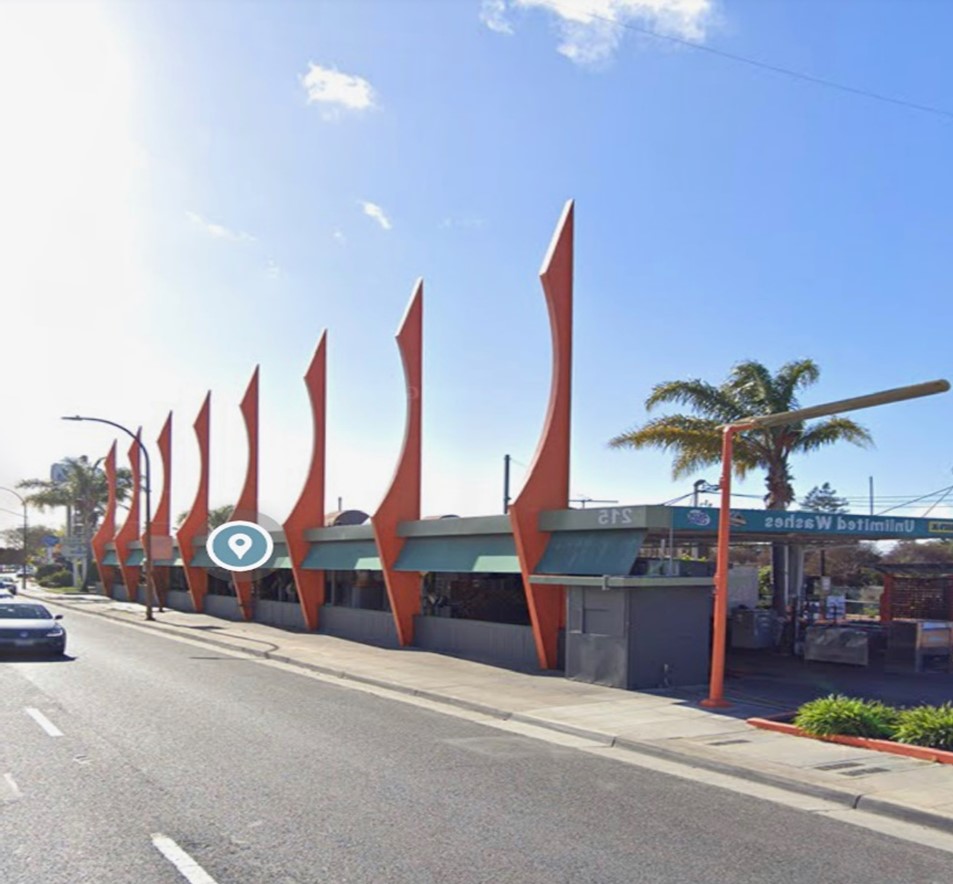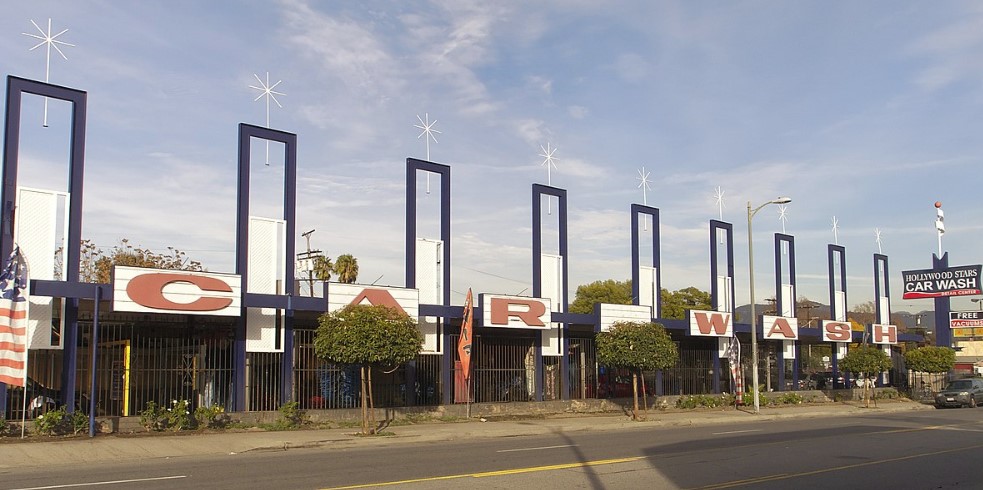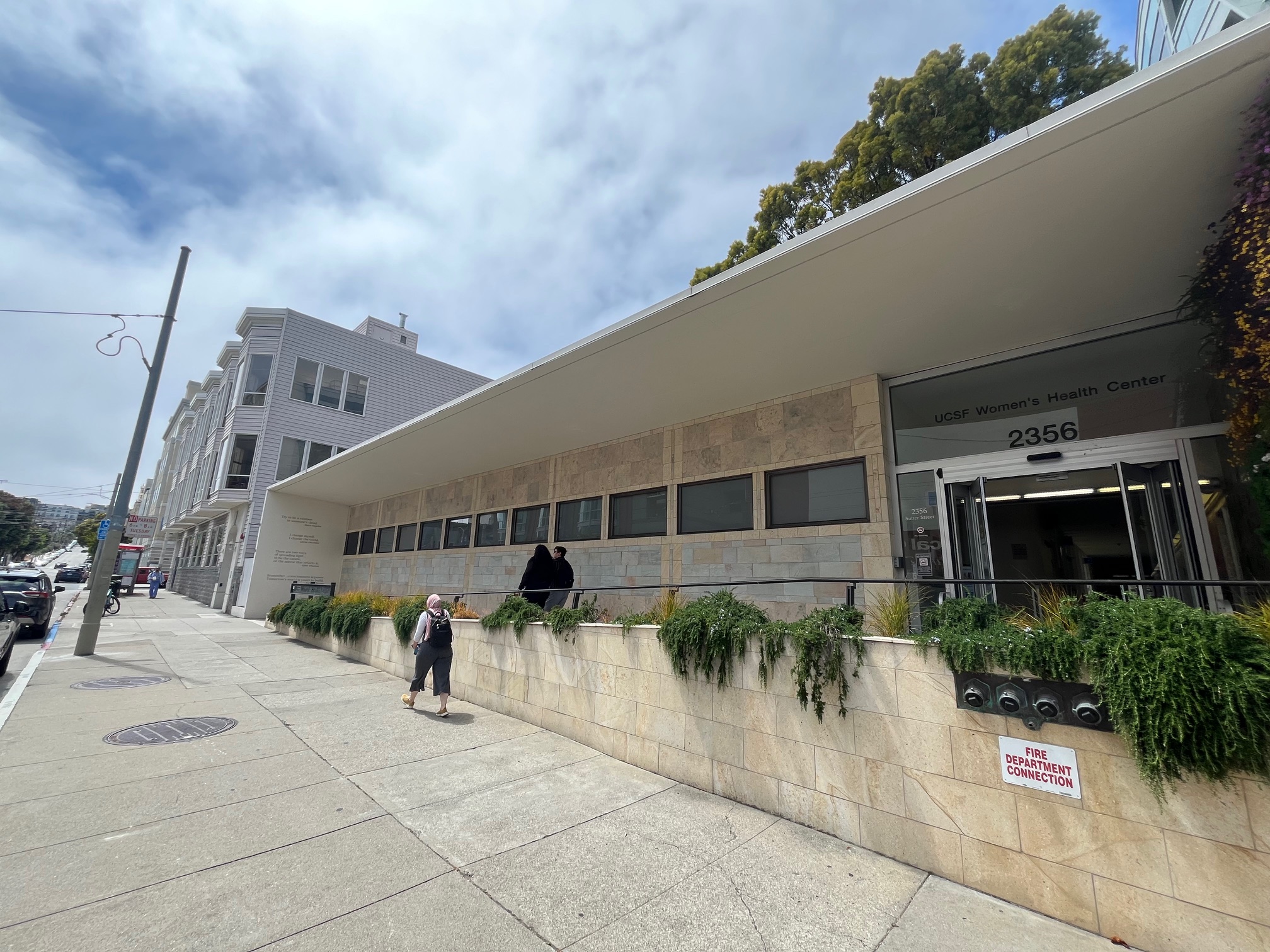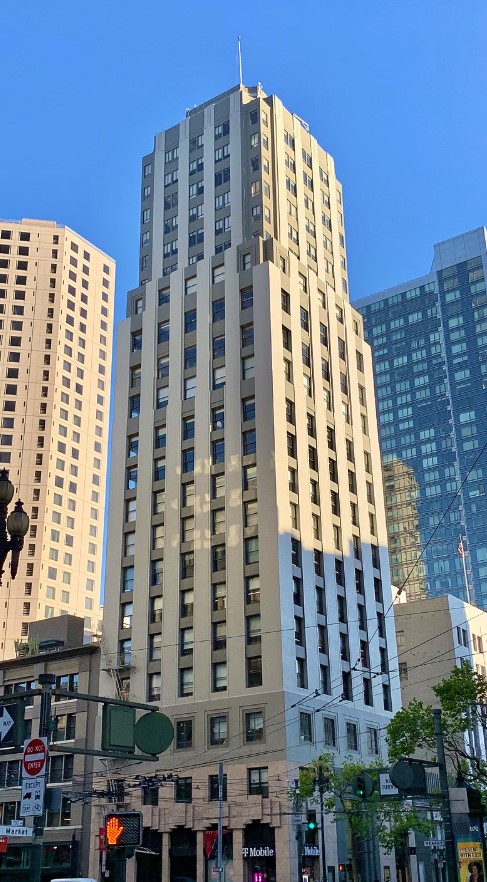In trying to understand the different types of car washes I have seen over the years, such as the one below in Redwood City, CA, I have run into various descriptions of the type of architecture (including Googie of all names), but the architect is often disappointingly labeled as “anonymous”. The term Googie turns out to be the name of a coffee shop in Los Angeles designed by John Lautner in 1949. This coffee shop was located at 8100 Sunset Blvd. and demolished in 1988. Googie was the nickname of Lilian Burton, co-owner of the coffee shop and now a famous way of referring to this type of architecture.

John Lautner designed Googie’s Coffee Shop on Sunset Boulevard in 1949 when he was not so well known. This set off the so called Googie Car Wash design subcategory of architecture. Lautner went on later to design the very famous Goldstein house in Los Angeles, featured in various commercials and movies. This house is named after its current owner, James Goldstein, who gifted it to LACMA.
Lautner also designed the Silvertop residence in Los Angeles.
In 1952 Douglas Haskell, the then editor of House and Home magazine, and the famous architectural photographer Julius Shulman came upon Googie and pronounced it the “new thing”. Haskell mocked Googie as trashy roadside architecture in editorials in House and Home magazine, ten years before Robert Venturi celebrated instead of mocked pop culture and roadside architecture in his 1964 book Complexities and Contradictions in Architecture and in his 1970 book Learning from Las Vegas. These two books took a different stance on what Haskell lampooned in 1952. Eero Saarinen was even influenced by Googie and demonstrated flair in his TWA Terminal at LaGuardia with a derivation of the coffee shop style labeled Populuxe design.
As a result, Googie style car washes popped up in 1963, including the 5 Points Car Wash in Whittier, California.

See https://www.googiecarwash.com/history for more details on the history of Googie in Southern California. In addition the car 5 Points Car Wash website has several historic photos including its renovation in 2017. There is an ongoing move to register it as a historic structure.
After 1963 this archetype spread all over California. From San Diego to the Bay Area several car washes were designed in this manner. There are at least 2 remaining on the Peninsula south of San Francisco: one in Redwood City and one in Santa Clara at 3455 El Camino Real.

After 5 Points Car Wash made its debut, the Googie style spread even further throughout California and elsewhere. The Googie car wash shown below is in San Bernardino, CA:
Below is a variation on the original 5 Points Googie design theme:
I wanted to show the Inglewood Jet Car Wash here as another example but it has been sadly demolished. For photos from the Inglewood Public Art Commission, visit https://www.inglewoodpublicart.org/projects/jet-car-wash.
It is interesting what John Lautner initiated in 1949 and how it turned into a space age futuristic aesthetic. Most of these car washes are gone now, but the few remaining ones are starting to be recognized, as in the examples in Whittier and Inglewood, California.
Blog post written by David Tritt, Senior Architect.










